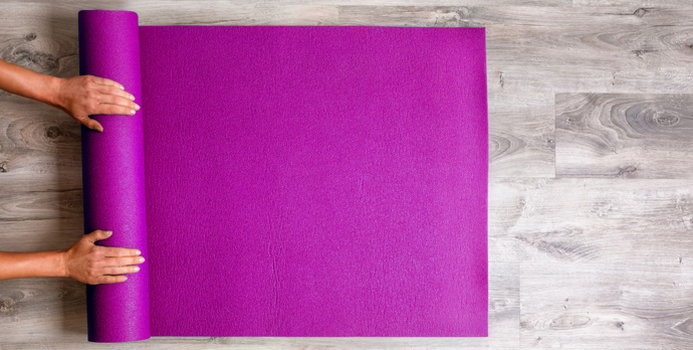The answer, as you probably expected, is yes!
Many people walk into any department store or sporting goods stores and choose the yoga mat that looks good, has an attractive price tag, and feels nice. However, a few weeks or months down the line, they may find that their yoga mat isn’t quite up to par, and they have to spend more money on a better, longer-lasting mat.
When shopping for a yoga mat, there are a few things you need to take into account.
Material
PVC is the cheapest material, and it’s the mat with the most stickiness (great for more active types of yoga). However, PVC is a synthetic, chemical-laden material, so many people prefer the eco-friendly options like jute, rubber, or even cotton. Jute and cotton won’t last as long as PVC and won’t have as much give, but they will be far “greener.”
Texture
The texture of your mat is the only thing that will keep you from sliding off once you start sweating heavily. PVC mats tend to have a man-made texture that is softer on your feet and hands, but the material is much slicker than organic jute and cotton. Rubber is a good option for those who want better stickiness and would rather avoid PVC.
Stickiness
This refers to the mat’s ability to stick to the ground, which will stop it from sliding around as you train. It also helps to maintain your alignment, making it easier to hold the balance poses for longer. PVC mats have the highest stickiness factor, so they’re the best choice for stickiness.
Thickness
The thickness of a mat will affect your balance as well as comfort. Thicker mats will be resistant to wear and offer better cushioning, but that cushioning can interfere with your balance. However, thinner mats will offer less cushioning, so you run the risk of straining your joints.
These are the critical factors to take into account, and they are the ones that should govern your decision when shopping for a Yoga mat.
However, you also need to think about the quality, which is determined by both the material you choose and the mat’s construction.
As mentioned above, PVC is the longest-lasting material with the best stickiness, but there are different PVC qualities. The cheapest mats will give you 1-2 years of daily practice at best, though you’ll start seeing the wear within a few months. Spending a bit more on a higher-end PVC mat doesn’t guarantee longer durability — it’s more about the quality of the material than the price tag.
The best way to find out about the quality of the Yoga mats is to read reviews, not only those on the mat’s website but on third-party sites and Amazon. Read what experiences users have had with the mat, and see how long they say the mats last. Find a mat that suits your needs (size, thickness, stickiness, texture, etc.), but make sure it has the lifespan you want for your Yoga practice.
Quality really does matter in terms of lifespan, but it’s all the other factors that determine the comfort of your daily yoga sessions.
[Image via Shutterstock]



